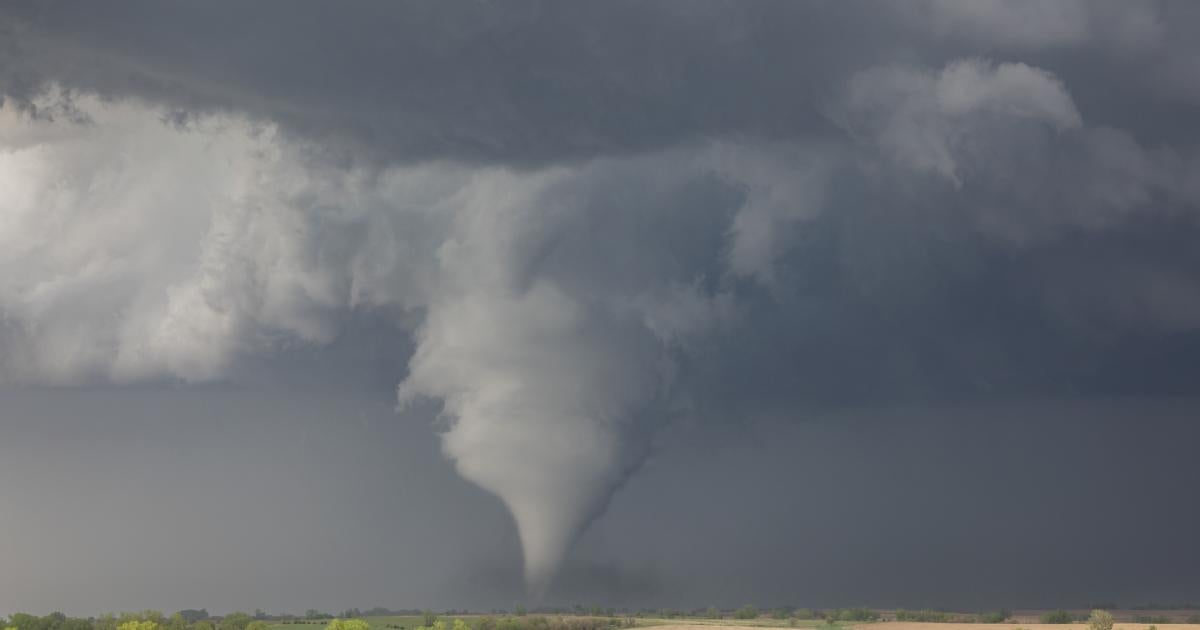
Report on Climate Change Narratives and Storm Data in the United States
Introduction
As the United States prepares for another storm season, public discourse is dominated by claims linking increased hurricane and tornado activity to climate change. This report examines these claims in the context of Sustainable Development Goals (SDGs), particularly SDG 13 (Climate Action), SDG 11 (Sustainable Cities and Communities), and SDG 9 (Industry, Innovation, and Infrastructure).
Analysis of Storm Frequency and Intensity Data
- Hurricanes:
- Data from 1900 to present show no significant increase in the number or intensity of hurricanes making landfall in the U.S.
- Historic hurricanes such as the Great Galveston Hurricane of 1900 and Hurricane Camille in 1969 occurred before significant rises in global CO2 emissions.
- Tornadoes:
- The average number of strong tornadoes (EF2-EF5) has trended downward over the past 70 years despite increased emissions.
- An observed rise in weak tornadoes (EF0-EF1) from 1950 to 1990 is attributed to improved detection technology like Doppler radar, not an actual increase in occurrences.
- Since 1990, the count of weak tornadoes has remained relatively flat, indicating stable tornado activity.
Economic Impact Versus Meteorological Intensity
- Increased disaster damage headlines often conflate economic costs with storm intensity, overlooking factors such as inflation and economic growth.
- Example: An F3 tornado in a previously unoccupied area causes less damage than the same tornado in a developed area due to increased infrastructure and population density.
- Similarly, coastal homes have increased in value and construction cost, leading to higher damage valuations from the same storm events over time.
Normalization of Disaster Cost Data
When adjusting for economic growth and inflation:
- Normalized costs of tornado damage show a decreasing trend.
- Normalized hurricane damage costs have remained relatively flat.
- These trends challenge the narrative that climate change is driving more destructive storms and highlight the importance of economic context in disaster impact assessments.
Implications for Policy and Sustainable Development Goals
- The media narrative linking climate change to increased storm severity often serves political objectives rather than reflecting scientific data.
- Calls for radical climate legislation, such as carbon taxes and bans on gas stoves and internal combustion engines, are frequently justified by these narratives without sufficient evaluation of their efficiency or necessity.
- Aligning with SDG 13 (Climate Action), policies should be based on accurate data and promote resilience rather than alarmism.
- Supporting SDG 11 (Sustainable Cities and Communities) and SDG 9 (Industry, Innovation, and Infrastructure) requires balanced approaches that consider economic growth, infrastructure development, and technological advances in disaster detection and response.
Conclusion
The current evidence does not support claims of increased frequency or intensity of hurricanes and tornadoes due to climate change in the United States. The real challenge lies in enhancing human resilience and sustainable development rather than succumbing to politically motivated alarmism. Effective climate action must be informed by robust data and aligned with the Sustainable Development Goals to ensure a balanced and sustainable future.

1. Which SDGs are addressed or connected to the issues highlighted in the article?
- SDG 13: Climate Action – The article discusses climate change, its alleged impact on storm frequency and intensity, and the political debates around climate legislation.
- SDG 11: Sustainable Cities and Communities – The article mentions the impact of storms on infrastructure and housing, highlighting economic growth and urban development affecting disaster damage costs.
- SDG 7: Affordable and Clean Energy – The article references policies related to electricity, such as carbon taxes and bans on gas stoves and internal combustion engines, which relate to energy sustainability.
- SDG 9: Industry, Innovation, and Infrastructure – The article touches on advances in detection technology like Doppler radar, which improves tornado detection.
2. What specific targets under those SDGs can be identified based on the article’s content?
-
SDG 13: Climate Action
- Target 13.1: Strengthen resilience and adaptive capacity to climate-related hazards and natural disasters in all countries.
- Target 13.2: Integrate climate change measures into national policies, strategies, and planning.
-
SDG 11: Sustainable Cities and Communities
- Target 11.5: Reduce the number of deaths and the number of people affected by disasters, including water-related disasters, with a focus on protecting the poor and vulnerable.
- Target 11.b: Increase the number of cities adopting and implementing integrated policies and plans towards inclusion, resource efficiency, mitigation and adaptation to climate change.
-
SDG 7: Affordable and Clean Energy
- Target 7.2: Increase substantially the share of renewable energy in the global energy mix.
- Target 7.a: Enhance international cooperation to facilitate access to clean energy research and technology.
-
SDG 9: Industry, Innovation, and Infrastructure
- Target 9.1: Develop quality, reliable, sustainable and resilient infrastructure, including regional and transborder infrastructure.
- Target 9.5: Enhance scientific research, upgrade technological capabilities of industrial sectors.
3. Are there any indicators mentioned or implied in the article that can be used to measure progress towards the identified targets?
-
Indicators related to SDG 13 (Climate Action):
- Frequency and intensity of hurricanes and tornadoes (meteorological data).
- Normalized economic costs of natural disasters (adjusted for inflation and economic growth).
- Trends in carbon emissions and their relation to storm activity.
-
Indicators related to SDG 11 (Sustainable Cities and Communities):
- Number of deaths and economic damage caused by storms.
- Extent of urban development and infrastructure in storm-prone areas.
- Implementation of disaster risk reduction policies.
-
Indicators related to SDG 7 (Affordable and Clean Energy):
- Adoption rates of clean energy technologies and policies (e.g., bans on gas stoves, carbon taxes).
- Electricity costs and access to affordable energy.
-
Indicators related to SDG 9 (Industry, Innovation, and Infrastructure):
- Use and advancement of detection technologies such as Doppler radar.
- Investment in resilient infrastructure to withstand natural disasters.
4. Table: SDGs, Targets and Indicators
| SDGs | Targets | Indicators |
|---|---|---|
| SDG 13: Climate Action |
|
|
| SDG 11: Sustainable Cities and Communities |
|
|
| SDG 7: Affordable and Clean Energy |
|
|
| SDG 9: Industry, Innovation, and Infrastructure |
|
|
Source: heritage.org







